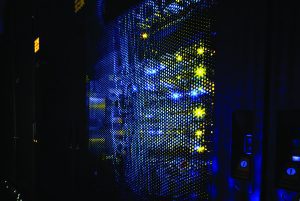Utility industry developments, such as the growing adoption of smart grids and increasing move toward decentralized energy, are changing equipment demands. Medium voltage switchgear is under more pressure than ever to meet these ever-evolving needs.
Medium Voltage switchgear is a critical component of smart grids and distributed generation. In order to handle the equipment requirements, switchgear must become more intelligent, flexible, compact, safer and able to withstand aggressive operating conditions without losing insulation performance. To do this, switchgear technology is shifting from solid insulated switchgear (SIS) and air-insulated switchgear (AIS) to advancements like shielded solid insulated switchgear (2SIS).
2SIS offers more flexibility and the ability to withstand harsh climatic conditions (dust, heavy pollution, humidity, temperature changes, etc.) because the main medium voltage circuit is encapsulated in insulated materials and the surface of the insulating material is covered by a conductive layer connected to the earth, which fixes the potential. The 2SIS insulating performances are insensitive to harsh environmental conditions as they are not subject to any electrical field variations, ensuring stability for the switchgear’s entire operational life and reducing the risk of internal arcing. In contrast, harsh conditions can allow the electrical field to vary in SIS technology, leading to aging of the insulating parts.
Utilities’ move to smart grids will require more sensors, current transformers, and voltage transformers to be installed in the MV switchgear network to optimize installations. The additional sensors reduce energy costs because they make it possible to identify major consumers and to optimize utilities’ energy contracts by better managing consumption peaks. Newly available 2SIS technology sensors will also improve power continuity, quality, and availability of service.
Low power current transformers (LPCT), low power voltage transformers (LPVT), and fixed circuit breakers can all also be compatible with 2SIS. This brings benefits such as the ability to withstand harsh environments and more compact equipment size.
It’s clear that utilities can benefit greatly from 2SIS technology, but there are several reasons why they have maintained their time-tested switchgear approach:
- Long switchgear life: Switchgear’s life cycle is around 40 years, while fundamental technological innovations occur roughly every 20 years. This means older switchgear continues to be valid architecture for traditional, centralized power transmission and distribution (T&D) networks.
- Stability: T&D operators are hesitant to adopt new technology in case it causes instability.
- Maintenance: Maintenance and repair is easier for crews if technology does not change.
While these are all valid concerns, if utilities really want to take advantage of smart grid capabilities, they must focus on intelligent, reliable smart grid-era switchgear technology that can withstand harsh environmental conditions, like 2SIS.
Learn more in our free paper, Shielded Solid Insulated Switchgear technology: Advantages and responsiveness to switchgear standardization trends .



